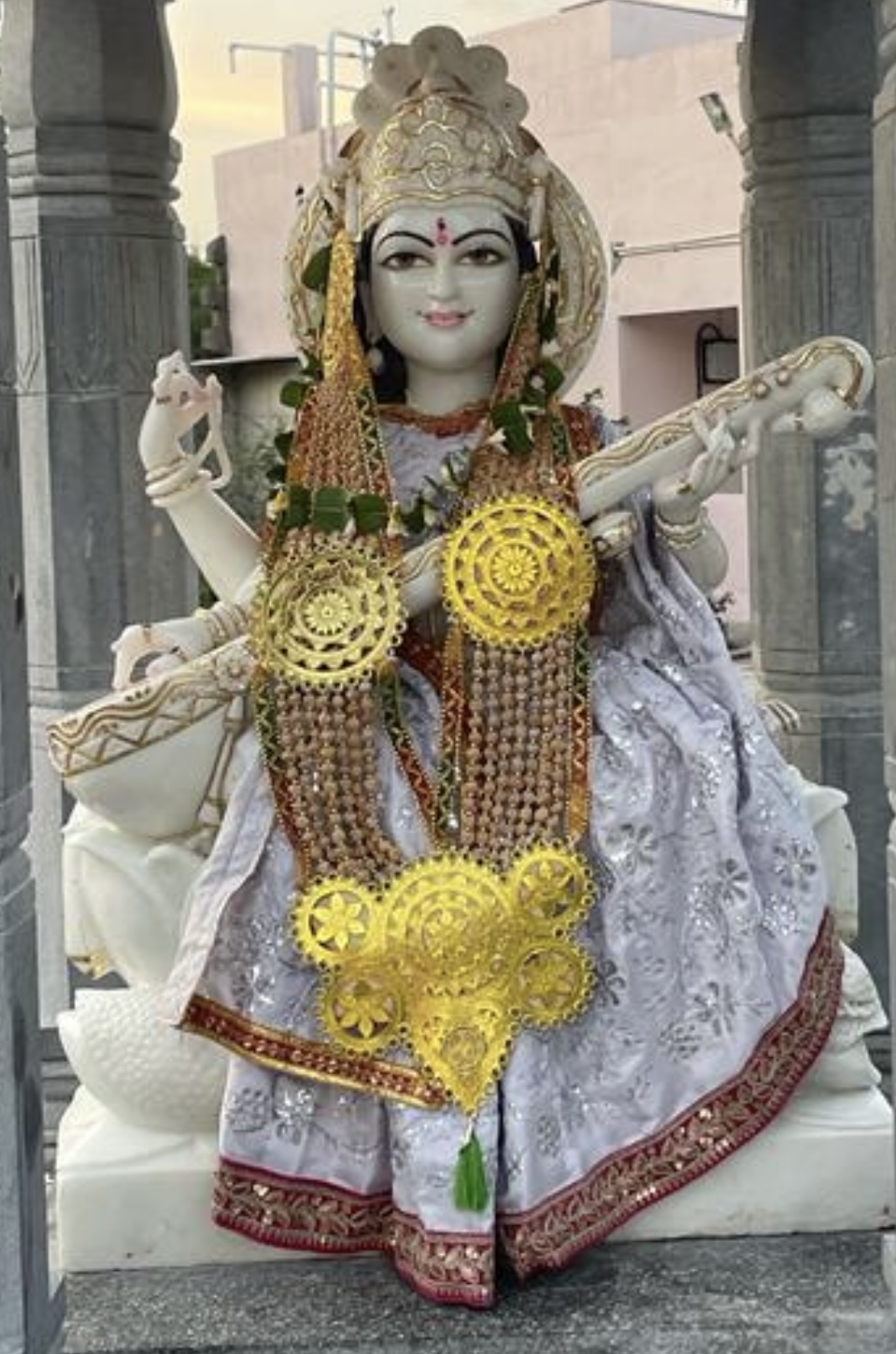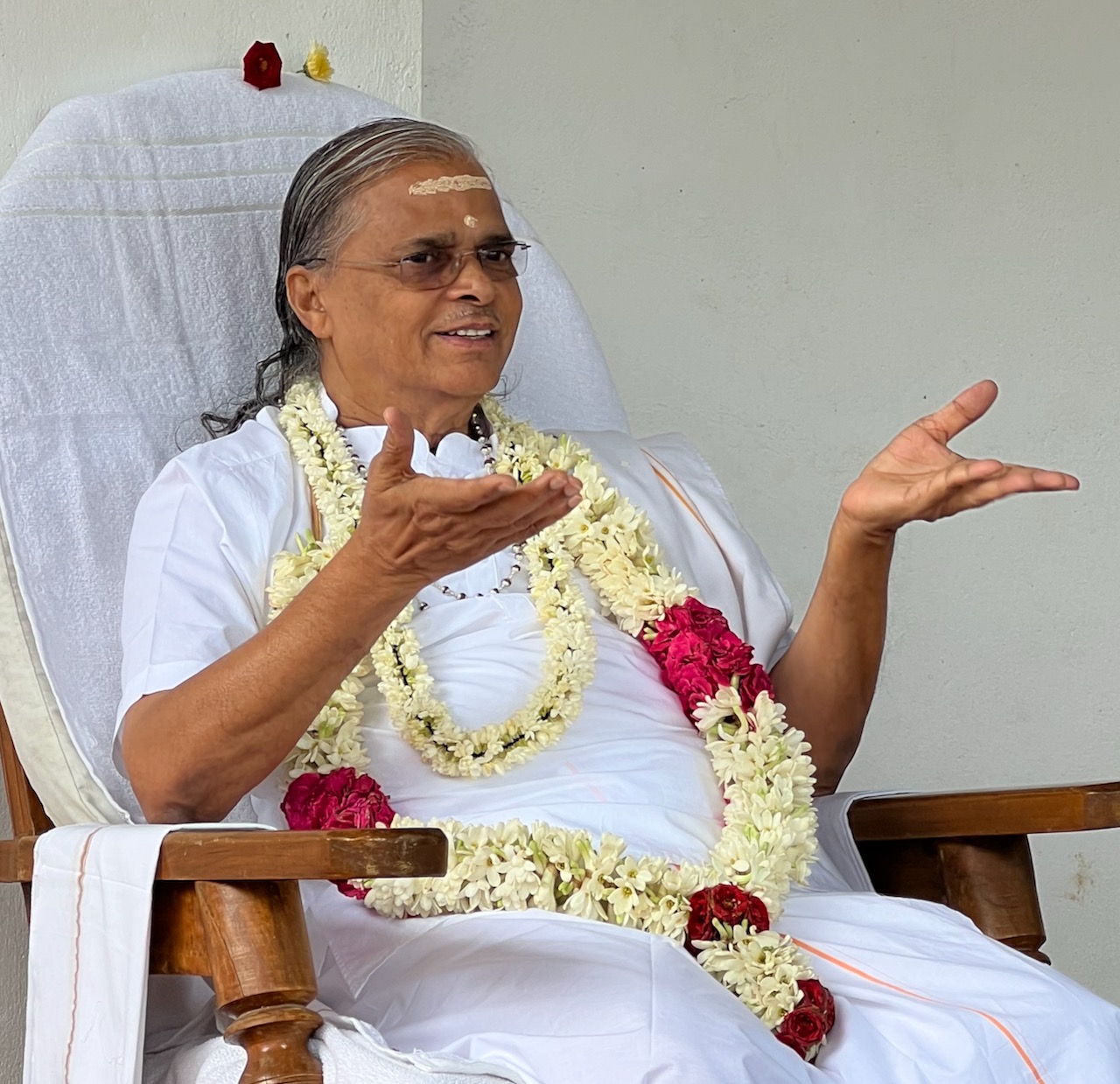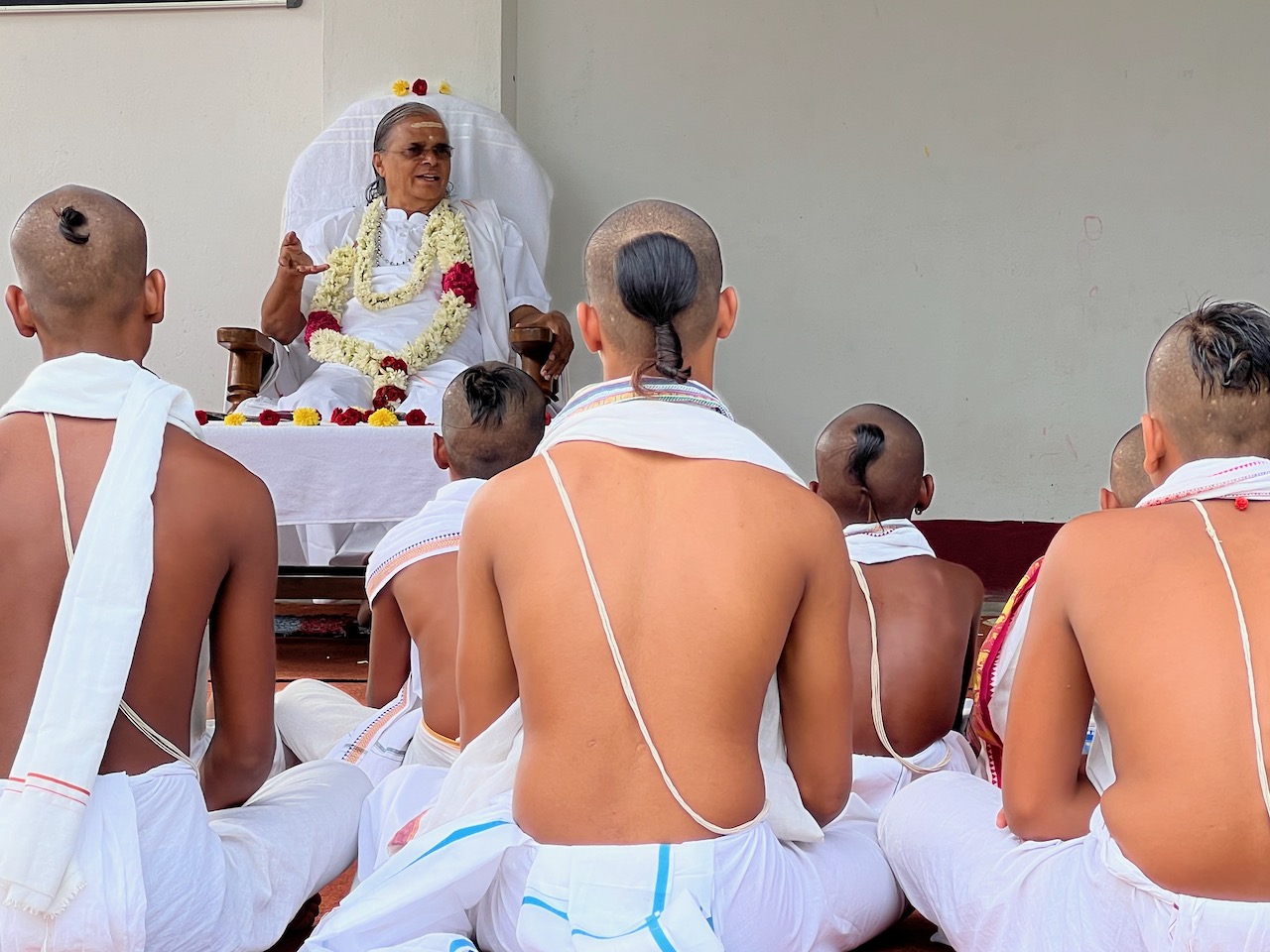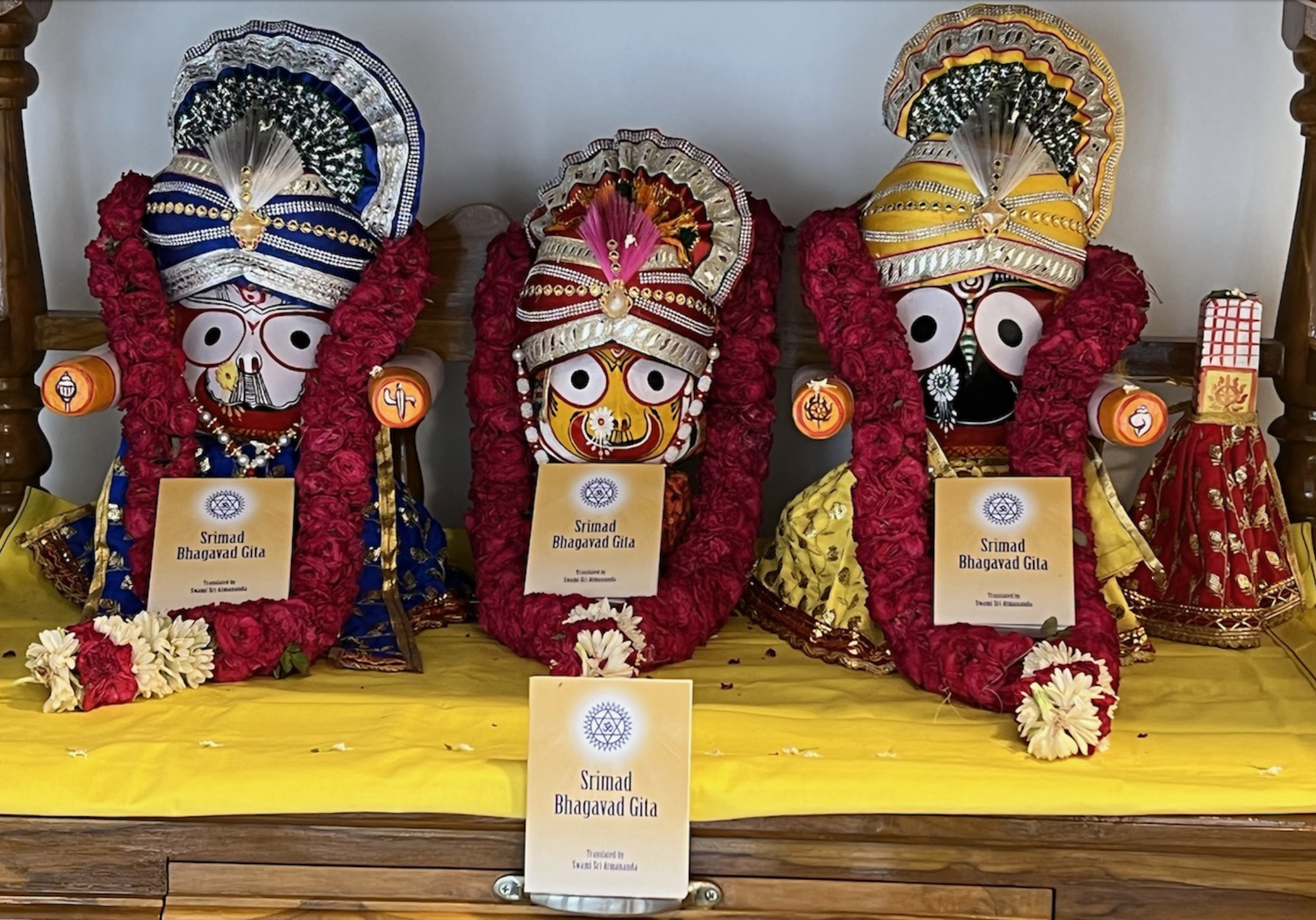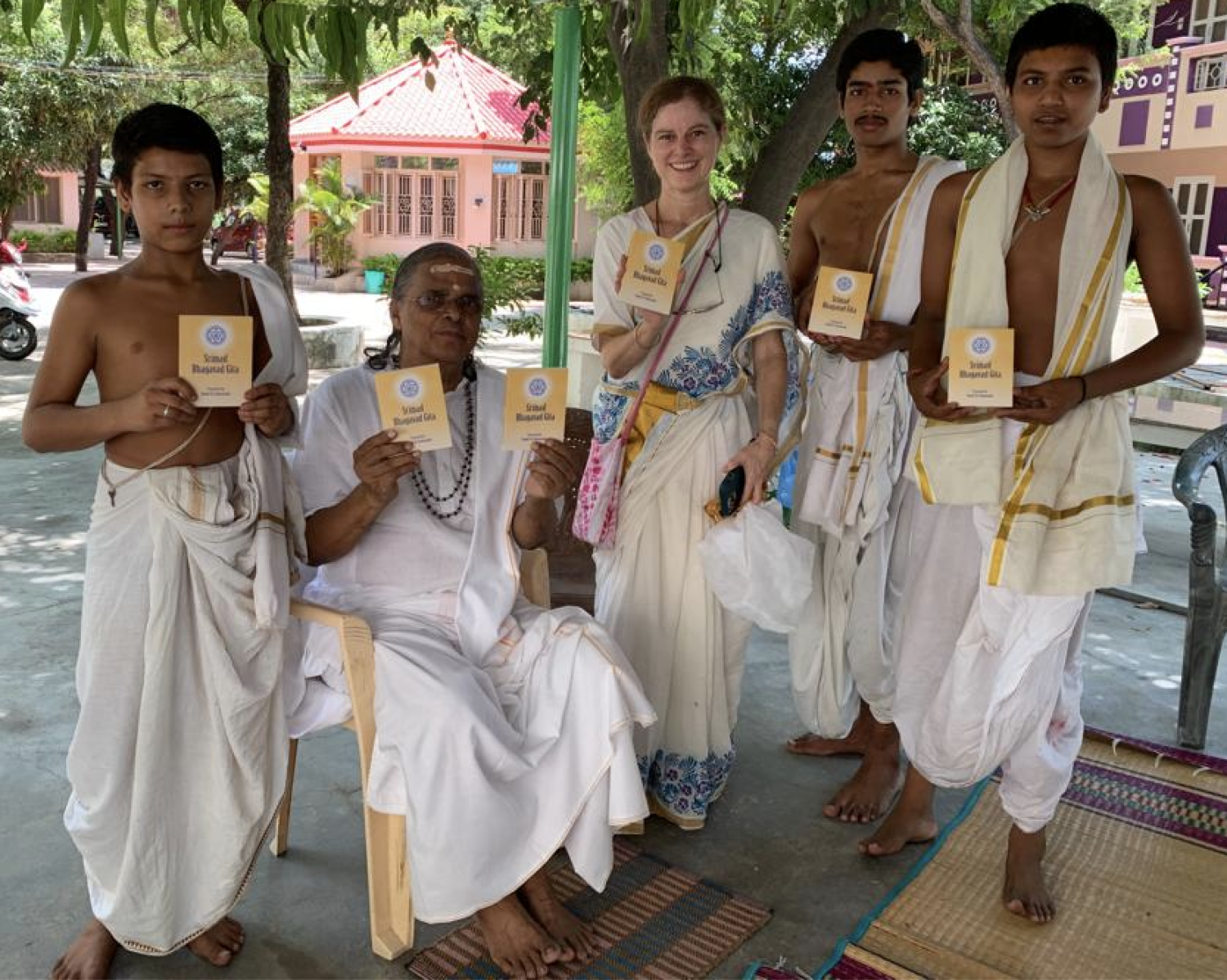Omm Namo Bhagavate
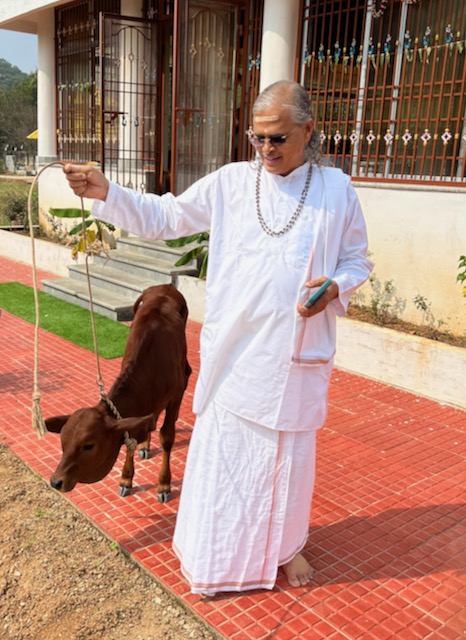
As the sea remains unchanged even after receiving all the waters, so also a man of equanimity continues to experience peace even when desires enter into him. This experience is not possible for one who is driven by desire.
Srimad Bhagavad Gita, Verse 117
The sea is already full with water. It is also completely stable, meaning it does not change its course or exceed its limit or overflow. The example of sea is given here for two reasons. One is its vastness, and second is its nature of not exceeding its shoreline or limit. Tsunamis and other things are very limited exceptions. This example of the ocean is used rather than a river because every year the river exceeds its limit and floods; it is a recurring phenomenon.
The sea is ever full of water and always stable, and never changes its course nor exceeds its limit, even though constantly receiving water from every source—not only from rivers, but also from drainages, streams and rain. Most of the rain goes to the ocean. Land receives twenty percent of the rain, and the remaining eighty percent falls in the ocean, because of the majority of the Earth’s surface is made up of water bodies. Only twenty-eight percent is land. As the ocean is always full of water and never exceeds its limit although continuously receiving water, so also one who is fully stable in experience is not at all perturbed even when all the desires enter. Only such a person can experience peace.
The word experience is used here in two connotations. One is experiencing the desire; the other is experiencing peace. These two experiences are different in nature. Desire-prompted experiences are all sensory in origin. You cannot have an experience that is not sensory in nature. Now you may, I am sitting quietly closing my eyes and the thought of my beautiful house and its garden, and all these beautiful flowers is coming to me. Which sense is this? It is the mind, and the mind is the king of the senses, so mind is also included in this category. As the king is also a human being, so also mind is called a sense organ, although it is the king of the senses.
Sensory experiences can never give saturation. They can give satisfaction, while denial of sensory experience can give dissatisfaction, and this dissatisfaction may be pain or sorrow. Any experience that is sensory in origin, that gives satisfaction or dissatisfaction, pleasure or pain, sorrow or happiness, is desire-prompted. We are sitting here in a closed room and our consciousness is not distracted anywhere else. We are not identified with what we are seeing, with the sense of touch, whether we are sitting on the hard surface or on a soft cushion, or with any outside noise. When you continue to experience this peace even when your senses are active, that is still higher peace, and when you will be able to retain that state of peace even when your senses are tormented, that is the highest type of peace. Like if you are feeling severe pain and your sense of touch is very agitated, but this pain is not so impactful that it will bring you down from your highest state of bliss. That is the state referred to here and that is the state to which Gita wants the seeker to reach.
The ocean that is already full with water: symbolically it means, this yoga is applicable to a human being who already has all types of experiences. This is the reason the yoga of Gita is not for children, nor for one who has not experienced all aspects of life. If I will teach this yoga of Gita to an adolescent boy, he may understand it fully, and he may have some sort of conceptual clarity, but he can never reach that state. The ocean must first be filled with water, and here water symbolizes the experience of man.
Experiences are recurring in nature. Lord says in this chapter, this experience comes and goes, endure it calmly. This refers not only to unpleasant experiences but also pleasant ones. If you are enduring them calmly it will push you beyond. Yoga is a constant forward march and a constant struggle to retain your state and not be thrown out of the track. When you are struggling like that it means you are fighting the battle.
This verse uses the attributes of the ocean—vast and full of water—to describe a person who has already experienced everything that is desire-prompted. Desire-prompted means that which is sensory in origin. That is why Gita yoga is for an adult; it cannot be for an adolescent. Adult means a mature human being, and maturity here does not refer to age, it here refers to experience. Mature means one who already has the experiences of all the five senses, the vital and the mind, and whose intellect is expanded. Such a person can practice the yoga of Gita.
The first condition is full with water, and the second is stable. The ocean is not only vast and full of water, but also it is unmoving, not changing its course. Waves come in the ocean, but only up to the shoreline. Beyond this wave will not come. Similarly, a person who has attained equanimity will respond and it may be with a smile, an embrace, a kick, shouting or an irritation, but it will not exceed the limit. Depending on the nature of the signal, a person of equanimity will respond. Whatever type of response is needed, only that type of response he will give.
If someone comes to hit him with a stick, a person who has attained equanimity will resist, because he has not lost his common sense. He may hold the stick, or may be able to snatch it away, but he will not hit back. You greet him and he will also greet you—he will not be stoic, he will recognize you and your greeting, but he will not be trapped by your smile. That is within the shoreline, like the sea is within its shoreline, firmly stable. A person of equanimity knows how to respond, how much to respond, when to respond and to whom to respond. That is not a violation of the equanimity state. The ocean has waves that rise and fall within its limit, but the ocean is firmly stable. So also a man of equanimity is stable and firm in his response. This firmness does not always mean roughness, rudeness or stoic neutrality. It is lively, but will not exceed the boundary line.
One who has not reached this state is called kaamakaami, one who is struggling for desire fulfillment and still desires desire. You cannot say, “I am aspiring that Swamiji should come with a bucket full of fruits so that we will eat.” That is not an aspiration. It is a desire. All desire is sensory in origin. All aspiration is extra-sensory in origin.
A desiring person can never experience peace, and even if he feels that he is experiencing it sometimes, it cannot be called peace, because when peace comes it never goes. Experience comes and goes, but peace comes and grows. It keeps growing to such an extent that it can grow no more. That is the state we call yoga siddhi, and that is what I call realization.
When you have realization, your experience cannot grow further because you have reached the state of unmoving and you are stable, like the infinity of the sky and the vastness of the ocean. In this vastness, waves and ripples come and go; that the yogi is able to experience.
Many people ask me what happens in these three to four hours when I sit in deep samadhi: “Do you go to sleep, or are you fully awake? Whether thought comes?” My answer is, “Thought does not come in the way that you understand what thought is. Awareness comes and goes.” It comes from nowhere, because you are awareness; you simply transcend the experience. When experiences are transcended you enter into awareness, which is all pervading. Experience is not all pervading, awareness is.
Unmoving and stable: unmoving means you are not going anywhere because you are everywhere. You have become awareness. Experience only comes and goes; it has a direction and a dimension, and it goes from here to there, to there, to there. Awareness has no direction. It only has dimension. Experience has a depth, but awareness has a height. It does not have any depth. A person of equanimity has dimension and height and although remaining on the desire plane, he is not in desire. Experiencing everything, identified with nothing, because he is in the state of stable peace. Such a person radiates the state of peace.
This is what the seekers experience when they come near an enlightened being. He may be just sitting, or doing his work, and you come and sit at a distance. After some time what you will experience that you are feeling calmness and silence. It is becoming deeper and stronger, and after some time it will be difficult for you to look towards the enlightened being or the seer, and you begin feeling drowsy. Many people feel guilty when they feel drowsiness but they should not, because that is a natural state. From waking state you go to dreaming state, from dreaming to sleeping, and from sleeping you go to transcendental state. Drowsiness will lead to sleep, so some people go to sleep. The person that disturbs another person who is in a drowsy state or is entering to sleep state, by saying, “Hey, don’t sleep here,” is creating a karma. Depending on the system of that drowsy seeker, the force that is transmitted from the seer is taking him to different zones. He should never be disturbed. If the person himself is becoming conscious that is a different thing, but you should not make another person conscious that is sitting in front of an enlightened being.
This is the reason I say to those who come to me, “If you feel sleepy, sleep. If you feel drowsy, let it be, don’t feel guilty.” Prakriti is pushing him to a state of sleep, because he is receiving more in that state. His consciousness was a parched land before. Now it will receive the drops, and after it absorbs them and becomes a wetland, the stream will flow. That is the secret.
One should be stable in awareness. If you are a poor man and you come near a billionaire, you will never experience that you have become rich. But whosoever has come near an enlightened being has certified that they experienced peace, joy, tranquility and calmness. A rich man cannot transmit the power of affluence. Only one who has transcended richness can transmit affluence. As the ocean is filled with water, a person that is in the state of affluence will feel affluence everywhere. This state of being a millionaire or billionaire is a state of consciousness only. If you reach that state of consciousness and you are able to remain there, then you have reached the state of the ocean: filled with water, unmoving and stable. Remaining in that state of consciousness, respond to prakriti. From my experience I am telling: remaining in the state of being, respond to the world of becoming. Discharge your responsibility in the state of the becoming, but remain in the state of the being. In Verse 214, Lord Krishna says, he who performs action being linked with Brahman is not contaminated by sin.
One who, like an ocean, has reached the state of stability and is full of experience, experiences peace. Not one who is still struggling for desire fulfillment, or who continues to hope for some desire-prompted experience. As long as there is any pull for desire-prompted experience, one will not experience that unbroken stable peace. That is the highest state, Verse 117, and if one is able to maintain that state, one is established in Brahman. This is one of my favorite verses in Gita.
[From a 2010 Interaction at Satyachetana Ashram, Tiruvannamalai, India]

